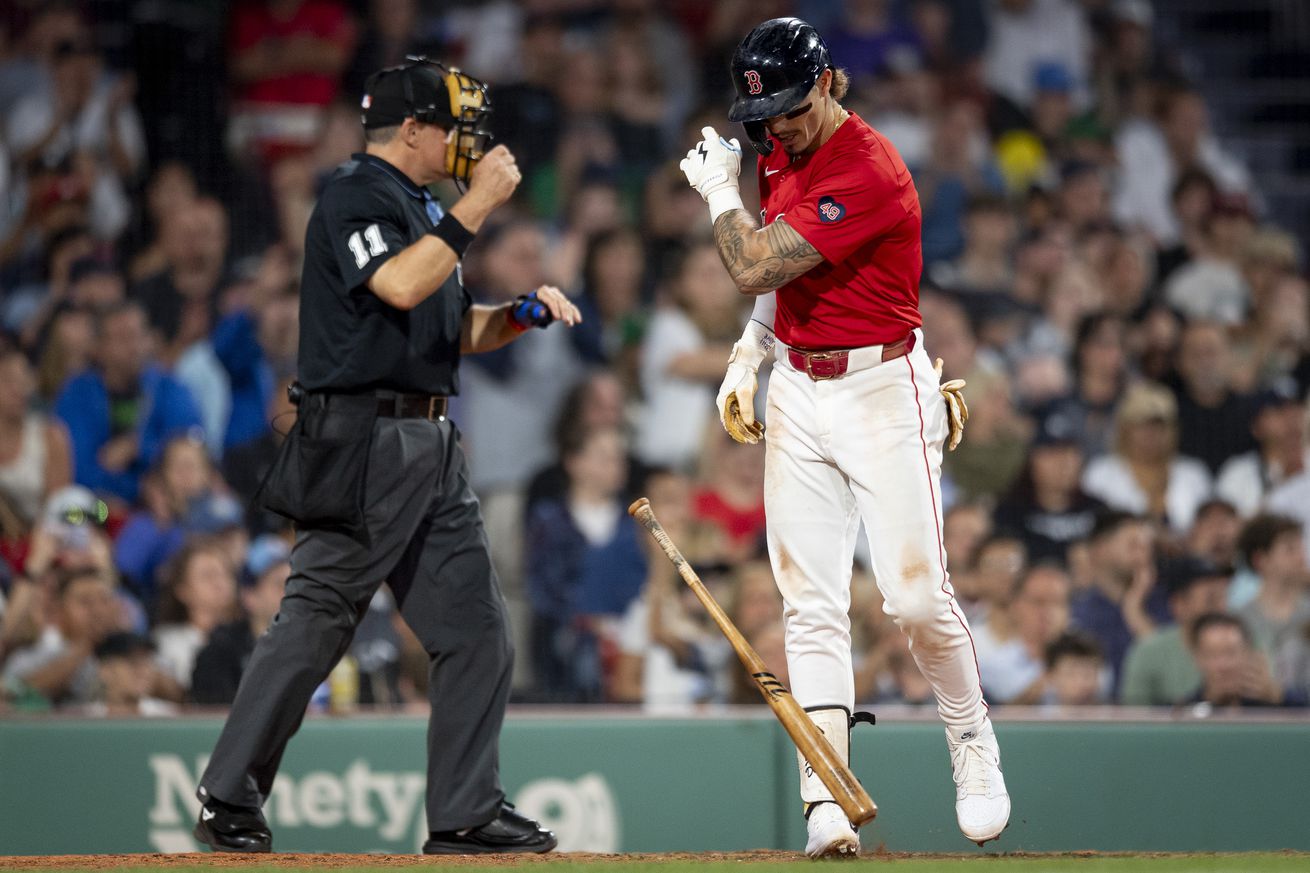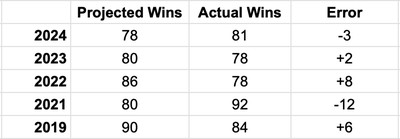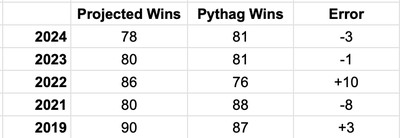
So the question is: how much should we trust PECOTA?
One of the most famous projection systems out there just spit out its 2025 forecast and things don’t look great for the Red Sox. Baseball Prospectus first released its PECOTA projections way back in 2003. I don’t know whether it was actually the first sabremetric projection system, but it was certainly the first one most people had heard of and it became a flashpoint for the statistical debates that would divide he baseball community for the foreseeable future.
With respect to the 2025 Red Sox, it’s primed to become a flashpoint again: PECOTA projects the Red Sox to win just 78 games and finish in last place in AL East.
The first question you should have when you encounter any projection system is a basic one: how accurate is this system, generally speaking? Let’s take a look. Here’s how PECOTA projected the Red Sox in each of the last five full seasons of baseball:

That’s… pretty good I guess? The computer came close to nailing the past two seasons. It made two sizeable misses in 2022 and 2021. And I would call its 2019 projection a moderate miss, though it’s worth noting that, at the time, a lot of people thought that 90-win projection was way too low, only for it to turn out to be not low enough.
Taking the analysis one level deeper, we can see that PECOTA did an even better job when compared not to the actual number of games the Red Sox won, but to their Pythagorean wins, i.e., the number of games they should have won based on their run differential:

So, with the Vegas over/under for the Red Sox currently sitting at 84.5, does this mean we should all take the boat across the harbor to the casino in Everett, place our life-savings on the under, and then celebrate our impending fortunes with some beers a Night Shift? Go ahead and live your life if you’re so inclined, but I’ll hold onto my wallet.
There are a few issues to keep in mind with analyzing PECOTA projections, particularly with respect to the 2025 Red Sox. Notably, PECOTA is specifically bad at projecting the impact of young players. Computer projection systems are conservative by design, and they usually spit out underwhelming numbers for young, unproven guys. This works out fine in the macro because most young guys end up doing nothing of consequence at the big league level. But some rookies will break out, of course, and PECOTA just isn’t good at identifying which rookies those will be.
Looking more closely at PECOTA’s projections, note that the computer currenly has Nick Sogard, David Hamilton, and Romy Gonzalez all getting more plate appearances this season than Kristian Campbell or Roman Anthony. Of course it’s possible Anthony, Campbell, and Marcelo Mayer all flame out or do little help the big league club this year, and there’s a good argument that the Sox are relying way too much on them. But it’s also almost 100% likely that PECOTA is underestimating the amount of playing time that Anthony and Campbell in particular will get over the course of a 162-game season. By summer time, the Sox will likely be sinking or swimming with the rookies rather than with last year’s bench scrubs. But PECOTA doesn’t know that, so it just piles up plate appearances for guys like Sogard and Gonzalez, which likely drags the team’s win total down.
In other words, the Sox could very well finish in last again if everything goes to hell, but it won’t happen in the way PECOTA is predicting it will happen. It will be far more spectacular and embarrassing than that.